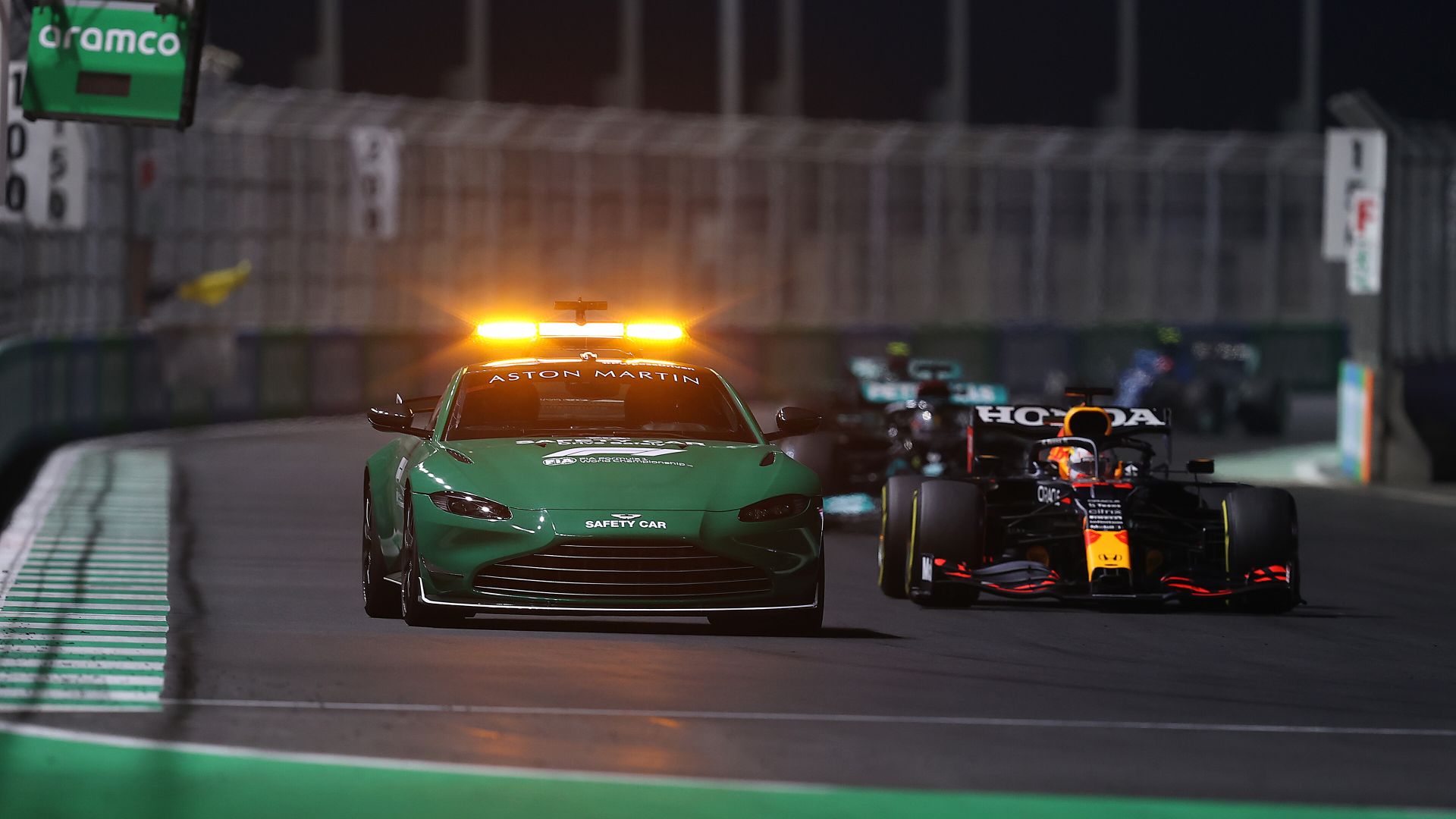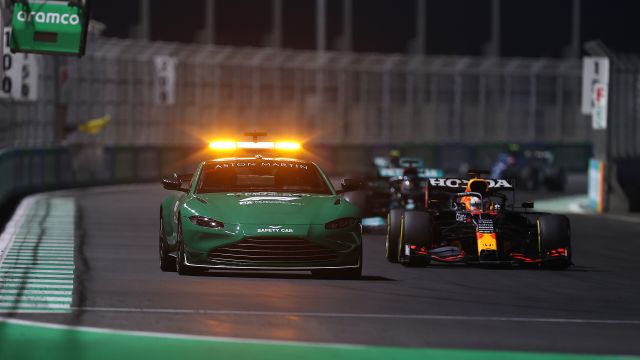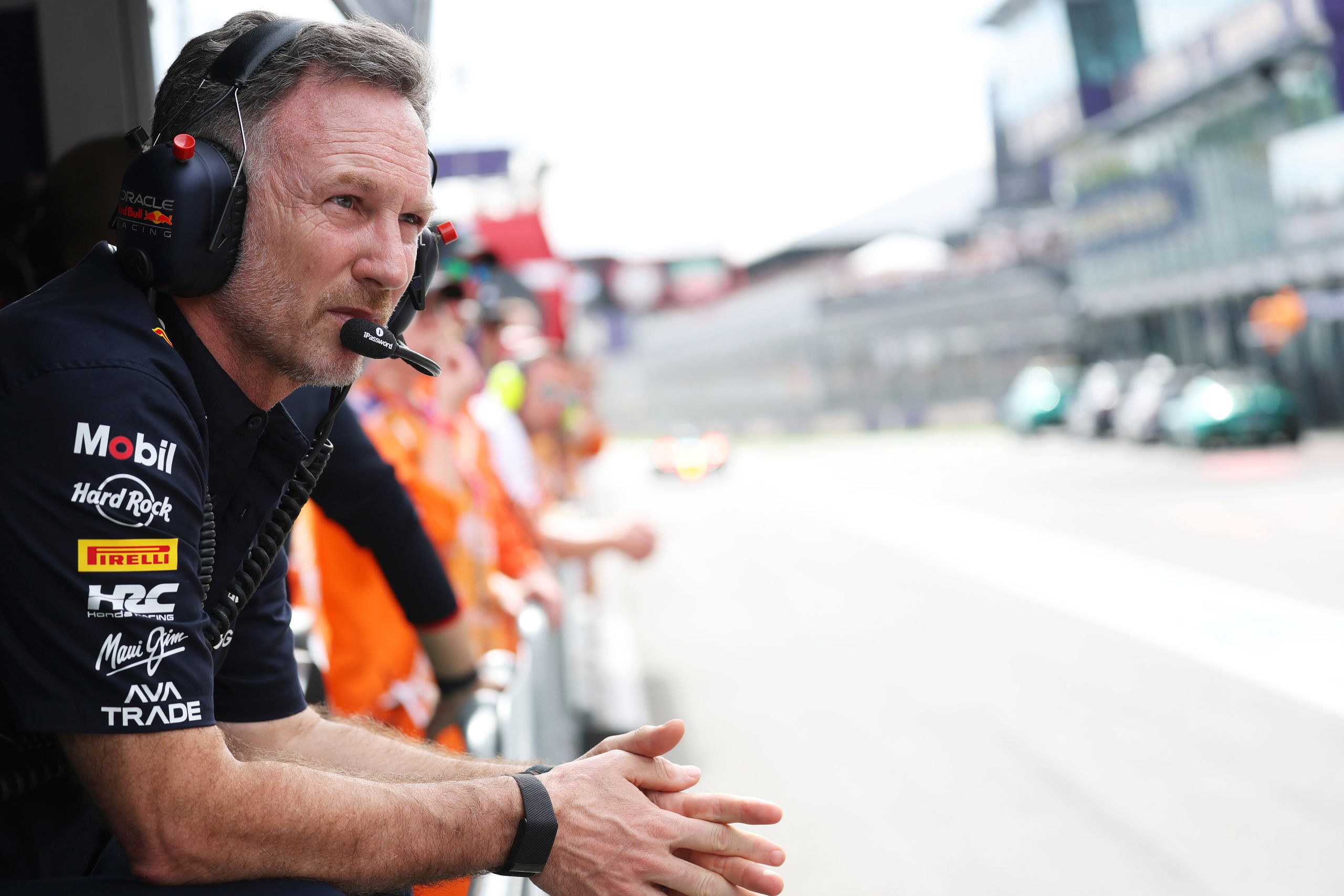What Is Delta Time In Formula 1? Decoding The Key Race Metric


One important concept used to measure the performance of F1 drivers and teams is delta time. Delta time is the difference between the lap times of two cars or the time difference between a lap time and a reference time.
Delta time is a term often flashed across race control screens and driver dashboards, and represents the time difference between a driver’s current lap and a reference lap. Delta time serves as a vital metric in understanding both strategy and performance during a race, helping drivers and teams assess how current lap times compare to previous ones or to the optimal lap times.
Delta time is more than just a number; it informs critical decisions during races:
- Performance Monitoring: It allows teams to monitor lap-by-lap performance, helping drivers understand if they are losing or gaining time against a set benchmark.
- Strategy Adjustment: During races, delta time can influence major strategic decisions, such as pit stop timing and tire changes, based on the car’s performance relative to others.
- Regulation Compliance: In situations like a Virtual Safety Car (VSC), drivers must maintain a specific delta time to conform to speed limits, ensuring both safety and fairness.
In the cockpit, delta time provides real-time feedback to drivers, which is crucial for adjusting their pace. During qualifying, this feedback is essential for drivers trying to shave off milliseconds on their fastest lap. In races, maintaining or understanding the delta time helps in effectively managing the gap to competitors, which helps with defending positions or planning overtakes.
Origin and History of Delta Time in Formula 1
Delta time is a valuable concept in Formula 1, providing insights into the performance differences between drivers and cars during races. The idea behind delta time is straightforward: it is the gap in time between two drivers’ lap times, which allows teams and spectators to observe and compare their performance accurately.
Formula 1 has always been a sport centered around speed and precision since its inception in the early 1950s. As the premier class of single-seater auto racing, every aspect of the sport, including innovations like delta time, contributes to its continued growth and progress. Early uses of delta time were likely manual calculations made by teams and spectators alike based on available telemetry data. This allowed for a better understanding of the vehicle’s performance and the relevant strategies needed throughout the race.
Over the years, as technology advanced, delta time has become a more precise measurement, with teams now utilizing high-tech equipment to track it in real-time. It is incorporated into Formula 1’s live data streams and broadcasts, ensuring that fans can also keep tabs on their favorite drivers’ performance throughout a Grand Prix.
Delta time has become a crucial aspect of motorsport strategy, informing decisions on tire management, pit stops, and overtaking tactics. In addition, it allows teams to anticipate the ebb and flow of the race, enabling their drivers to make calculated moves and avoid potential collisions.
In summary, delta time in Formula 1 has evolved from a basic calculation to a sophisticated tool utilized by teams and spectators to grasp the intricacies of the sport’s high-speed nature. Its relevance to both on-track performance and overall strategy cements its place as an indispensable aspect of the ever-evolving world of Formula 1.
Explaining Delta Time
In Formula 1 racing, delta time is a crucial concept used to measure and analyze a driver’s performance during a lap. Delta time refers to the difference in time between a predefined lap time and the actual time taken by a driver to complete the lap. This concept can be broken down into delta positive, delta zero, and negative delta.
Delta positive refers to a scenario when a driver’s lap time is slower than the predetermined lap time. In this case, the driver is taking extra seconds to complete the lap, which can be a sign of struggling with the car setup, driving conditions, or other factors affecting their on-track performance. The bigger the delta positive, the greater the gap between the driver’s lap time and the pre-defined lap time.
Delta zero, on the other hand, is when a driver’s lap time matches the predetermined lap time exactly. This is a rare occurrence but indicates that the driver is performing at the expected level.
Negative delta occurs when a driver’s lap time is faster than the pre-defined lap time, indicating an exceptional performance. The driver manages to shave off valuable seconds, thus potentially gaining positions and helping the team improve its standings in the race or overall championship.
Understanding delta time is essential for teams and drivers alike, as it helps identify areas where improvements can be made and highlights where the performance is already strong. It also provides a quantifiable metric for comparison between drivers, enabling objective assessments of their abilities on a specific track.
Delta Time in Actual Races
In Formula 1, delta time represents the time difference between two drivers, cars, or specific events on the track. It is commonly used to measure and compare lap times, as well as to evaluate racing strategies and overall performance.
Drivers and teams pay close attention to delta time throughout the race weekend, starting from the free practice sessions to the final race. It allows them to assess the performance of their cars, various tire compounds, and fuel levels, helping them adapt to various track conditions and situations effectively. Delta time is closely tied to factors such as grip, downforce, and drag, which all affect the car’s performance on different parts of the track.
During a race, delta time becomes crucial in evaluating the progression of each driver. Since the objective is to complete the race in the shortest possible time, analyzing delta times allows competitors to identify weaknesses, enabling teams to adjust their strategies accordingly. Pit stops are an essential component of race strategy, and varying the timing of these stops can significantly impact a driver’s delta time. Teams often plan their pit stops to maximize efficiency, considering factors like tire degradation and fuel consumption.
Incidents and penalties are other factors that can influence delta times in Formula 1. When the safety car or virtual safety car is deployed, drivers must adjust their speed to maintain a specific delta time, ensuring a safe distance between the cars and reducing the risk of further accidents. Time penalties and drive-through penalties can also affect a driver’s delta time, as they may need to serve these penalties by entering the pit lane, ultimately impacting their overall race time.
Delta Time in Practice and Qualifying Sessions
Delta time plays a crucial role in Formula 1 practice and qualifying sessions. It refers to the difference between a driver’s lap times, and it serves as a vital tool for teams and engineers to evaluate their car’s performance and strategy during these sessions. In Formula 1, consistent delta times are a critical aspect of a driver’s ability to maintain speed and control on the track.
During practice sessions, teams focus on adjusting their cars’ setup and fine-tuning their strategy based on the delta time data they collect. Engineers analyze the difference between consecutive lap times and search for potential improvements in various aspects of the car, such as aero balance or suspension settings. A smaller delta time indicates that the car has a more consistent pace on the track, which is desirable for achieving optimal speed in the race.
In qualifying sessions, delta time becomes even more critical as drivers compete to achieve the best possible starting position for the race. A faster lap time with a minimal delta time difference ensures that the driver can maintain a consistent high-speed pace, which is especially important for grid placement. Teams monitor delta times closely during qualifying, paying particular attention to the performance of competitors’ laps to adjust their strategy accordingly.
However, teams must also consider other factors when assessing delta time, such as rev and speed. Drivers must maintain the right revs to manage tire wear and fuel consumption effectively. Teams also need to understand how various factors, such as changes in weather conditions or track grip, might impact delta times during practice and qualifying sessions.
Delta time is a valuable performance metric in Formula 1 practice and qualifying sessions. Teams and engineers use it to adjust their cars’ setup and optimize their race strategy. Additionally, drivers strive to maintain consistent delta times, ensuring high-speed performance and improved grid placement.
Mathematical and Scientific Applications of Delta Time in Formula 1 Racing
Delta time plays a crucial role in Formula 1 racing as it measures the difference in time between a racer’s current lap and a specific target time. This target time often represents the current best time or an ideal lap time, computed using complex mathematical models. To improve lap times, teams of mathematicians and scientists analyze each driver’s delta time to identify areas that need improvement and create strategies to increase their chances of winning the race.
In Formula 1, delta time is generated in real-time by advanced telemetry systems that measure various aspects of the car and the driver’s performance, providing critical information for racing teams. These mathematical models take into consideration factors such as speed, cornering force, tire grip, fuel consumption, and aerodynamics. Scientists and engineers then employ this data to fine-tune their racing cars, making them faster, more maneuverable, and more efficient, thus optimizing their delta time.
The refining process of a Formula 1 car becomes more complex due to the ever-changing race conditions, such as weather, track surfaces, and car components’ wear and tear. The rapid response to these changes can provide a competitive advantage for a team. For instance, if a car’s delta time demonstrates it is losing grip after a specific number of laps, a timely pit stop for new tires can be organized by analyzing this data.
Moreover, delta time is useful in comparing performances between different drivers or teams. Teams can study the delta time differences throughout a race weekend to identify their competitors’ strengths and weaknesses and adapt their strategies accordingly.
In conclusion, delta time is a vital aspect of Formula 1 racing that drives continuous modification and improvement. The collaboration between mathematicians, scientists, and racing teams ensures the best possible strategies and engineering decisions are made in the dynamic environment of Formula 1, enabling each team to push the limits of their race car’s performance in the relentless pursuit of victory.
What Is Delta Time In Formula 1? – Frequently Asked Questions
What is the purpose of delta time in F1 races?
Delta time in Formula 1 races is a measure of the time difference between two cars on the track or a driver’s time compared to the fastest lap. This information helps drivers, teams, and spectators understand how well a driver is performing relative to others during a race, and it can also be used as a tool for strategy.
How is delta time calculated in Formula 1?
Delta time is calculated by comparing one driver’s lap time or sector time to another driver’s or the session leader’s respective times. The difference between the two times is the delta time, which can be either positive (the driver is slower) or negative (the driver is faster).
How does the Virtual Safety Car affect delta time?
The Virtual Safety Car (VSC) is implemented when there is a hazard on the track but a physical Safety Car is not needed. During VSC periods, drivers must maintain a predetermined delta time to ensure they slow down and maintain a safe distance from each other and the hazard. The delta time for each driver during the VSC is calculated based on a specific reference lap time and cannot be exceeded.
What happens if a driver exceeds the delta time?
If a driver exceeds the required delta time during specific race situations, such as a Virtual Safety Car period, they may be penalized with time penalties, a drive-through penalty, or even a stop-and-go penalty. Exceeding the delta time can be seen as gaining an unfair advantage, as drivers are expected to maintain a safe and consistent pace during such situations.
What is the difference between delta time in F1 and NASCAR?
In Formula 1, delta time typically refers to the time difference between drivers or between a driver and the fastest lap. In NASCAR, it is more commonly used to describe the time difference between a driver’s current lap time and their predicted lap time based on data collected during previous laps. Both uses of delta time serve to inform drivers, teams, and spectators about relative performance and help with strategy decisions.
How do teams and drivers use delta time for strategy?
Teams and drivers utilize delta time to make informed decisions about their race strategy, such as when to pit for new tires or make adjustments to their car’s setup. Having a clear understanding of the time difference between their car and others on track, or the time gap required to safely rejoin the race after a pit stop, allows teams to make strategic choices that can improve their overall race position and maximize their chances of success.
What does maximum delta time mean in F1?
In Formula 1, “maximum delta time” refers to a specific rule that sets a limit on how slow a car can go during certain parts of a session, typically qualifying. This is to ensure that cars are not driving excessively slowly on out-laps or in-laps, which could pose a risk to other drivers on faster laps. The FIA introduced a maximum reference lap time during qualifying to reduce the risk of cars going too slowly and causing traffic jams or accidents. The rule can be enforced by the race director to make sure that drivers maintain a minimum pace and do not impede other drivers.





